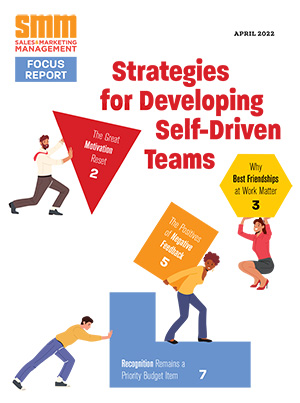Have you ever watched Discovery Channel’s MythBusters? In each episode, the hosts take urban myths and put them to the test. Using scientific methods, they confirm, deem plausible or bust these various myths.
Unfortunately, when it comes to sales and marketing myths, we can’t take to the lab like the MythBusters team and physically blow them to smithereens…but we can still bust them.
Some of the most common sales and marketing myths are so widespread that they’ve become accepted “best practices.” In reality, you’re hurting your chances rather than helping them. So, to help you increase pipeline and close more deals, here are the top three sales and marketing messaging myths…busted.
Myth #1: To develop effective messaging, use personas
Using personas to develop your messaging can actually lead you astray. This is because the motivation to change isn’t driven by a persona — rather, it comes from creating a sense of danger or need, and awakening the “old brain,” the decision-making part of the brain that’s responsible for your survival.
Reality: Rely on status quo clusters
The concept of a status quo cluster is that your prospects hold a certain status quo, and they think it’s safe or that it won’t harm their business. As a marketer, you must help them make a change. Identify and challenge your prospects on the gaps in their current assumptions about their status quo. The best way to do this is through a visual story with supporting evidence that validates the risks your prospects will face if they sustain their status quo.
When delivering a visual story, don’t be afraid to keep it simple. The most successful visuals are basic and concrete. These awaken and engage the old brain to get your prospects to visualize the challenges they face and how you can help them address those challenges.
Myth #2: Voice of the customer is the most helpful research for relevant messaging
Don’t let prospects pull the wool over your eyes. When it comes time to make a decision, prospects don’t always do what they say they will. Economists call this “declared preference” versus “revealed preference.” For example, people will tell an investment advisor they are aggressive investors, but as soon as the stock market loses two points they are putting their money in a mattress. Further, prospects don’t always know or can’t express pains that are big enough to get them to actually change.
Reality: Correct your vision
Prospects are often unaware of problems they have or emerging threats they’ll soon face. It’s your job to help them see that they must face these issues, or be prepared for these threats, and that they can do so either proactively or reactively. Make their status quo unsafe. Show them the result of missing the opportunity to solve and/or pre-empt these problems, and how you can help minimize them, or avoid them in the first place. You need to amplify the urgency to create a context for change that points to your solution.
Myth #3: Always start a new sales cycle with 20 questions
Studies have shown that executive decision makers aren’t reacting favorably to the 20 questions methodology. One of the reasons for this is that they expect you to already be knowledgeable about their company, their industry and their problems. Too many questions with no insight makes you look as though you know nothing about the prospect or his/her business, and it doesn’t help that everyone has the same questions. You need to stand out from the competition -this is not the way to do it.
Reality: Share your wisdom
To help prospects realize that they need to change and make a purchase decision, you must create a buying vision. Spewing product specs and features only makes you blend in with the competition, not differentiate yourself. Instead, help your prospects see how your new product will help them improve their current business by solving the challenges they face. Share insights that you’re seeing in their industry, such as how similar companies are approaching a problem they face. Package those ideas into ways your prospect can make meaning or sense out of the challenges they face and how they should respond.
Have you busted any sales or marketing myths lately? We’d love to hear about it. We’ll post your insights alongside this story at SalesandMarketing.com.
 A marketing and sales messaging expert, Tim Riesterer is the Chief Strategy and Marketing Officer for Corporate Visions, Inc., a leading sales and marketing messaging company that works with B2B companies worldwide. His books, “Customer Message Management” and “Conversations that Win the Complex Sale,” focus on creating and delivering sales-ready messages, tools and skills that marketers and salespeople can use to win more deals.
A marketing and sales messaging expert, Tim Riesterer is the Chief Strategy and Marketing Officer for Corporate Visions, Inc., a leading sales and marketing messaging company that works with B2B companies worldwide. His books, “Customer Message Management” and “Conversations that Win the Complex Sale,” focus on creating and delivering sales-ready messages, tools and skills that marketers and salespeople can use to win more deals.


